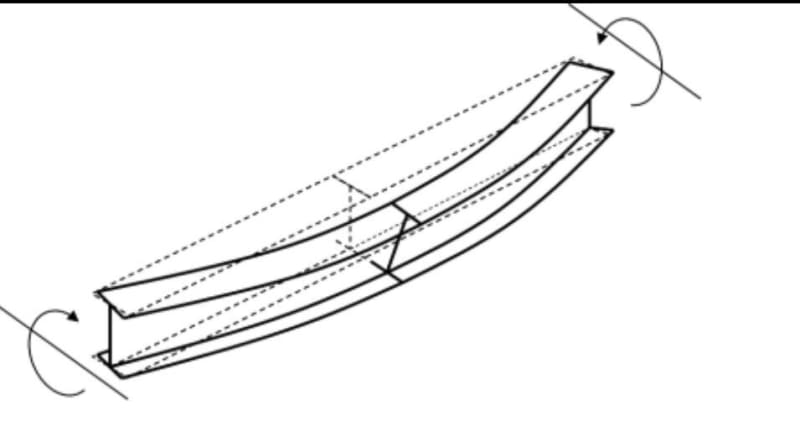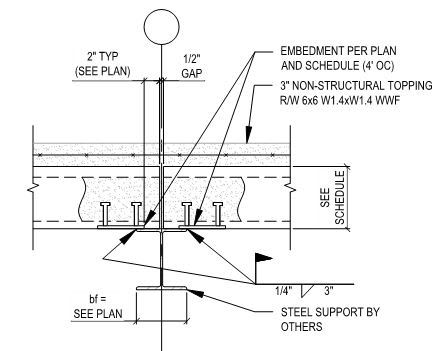Hi,
Its a 8" Hollow coreslab with 2" Concrete topping connection to a W10x33 steel beam. The connection (attached the connection detail) doesnt show shear studs on the compression (top) flange of the steel beam to resist lateral torsional buckling. However, it has fin plates and 4' Long strands of 1/2" dia bars connected and grouted in the joint, does this connection act as a restraint for the top flange of the beam to resist the buckling of the beam. It would be great if someone could help me understand this.
Its a 8" Hollow coreslab with 2" Concrete topping connection to a W10x33 steel beam. The connection (attached the connection detail) doesnt show shear studs on the compression (top) flange of the steel beam to resist lateral torsional buckling. However, it has fin plates and 4' Long strands of 1/2" dia bars connected and grouted in the joint, does this connection act as a restraint for the top flange of the beam to resist the buckling of the beam. It would be great if someone could help me understand this.


![[idea] [idea] [idea]](/data/assets/smilies/idea.gif)
![[r2d2] [r2d2] [r2d2]](/data/assets/smilies/r2d2.gif)
